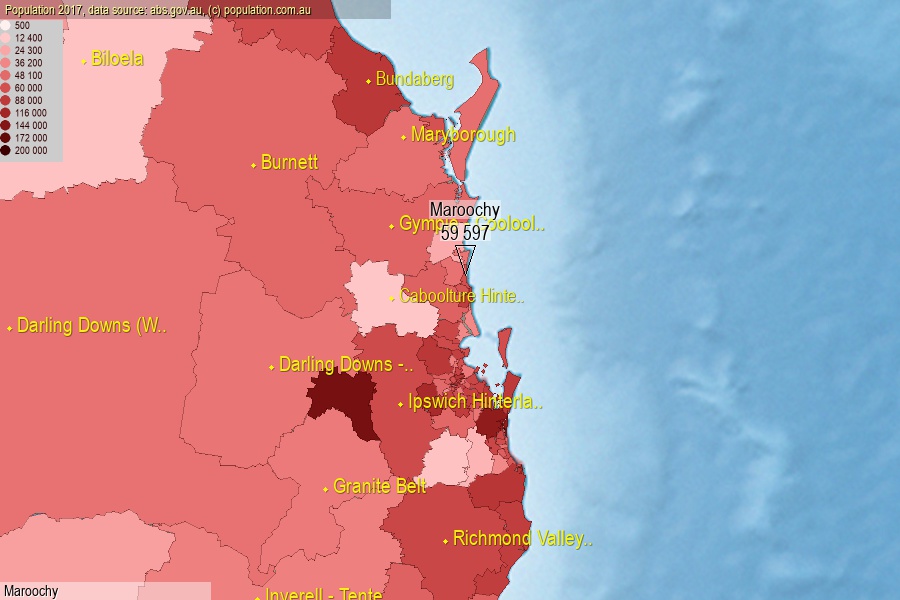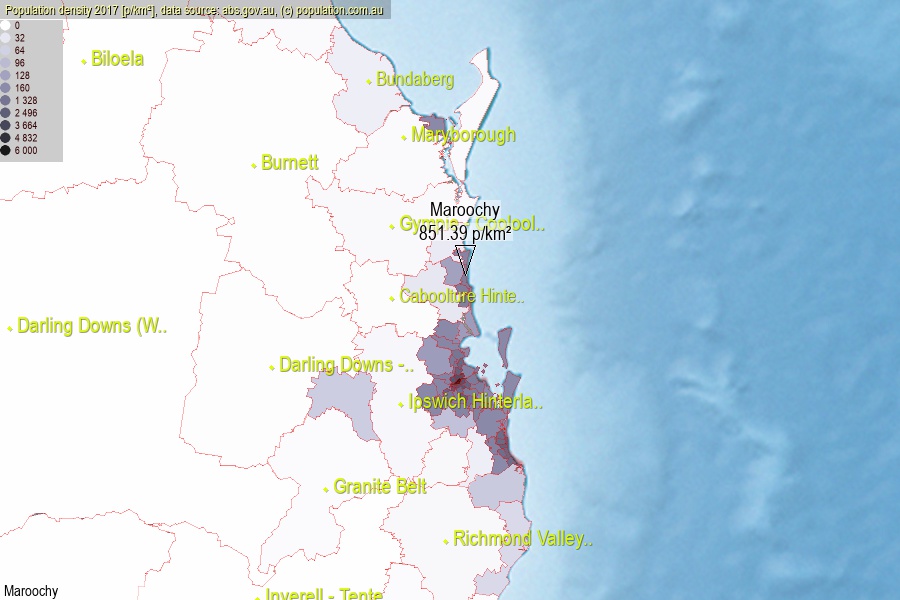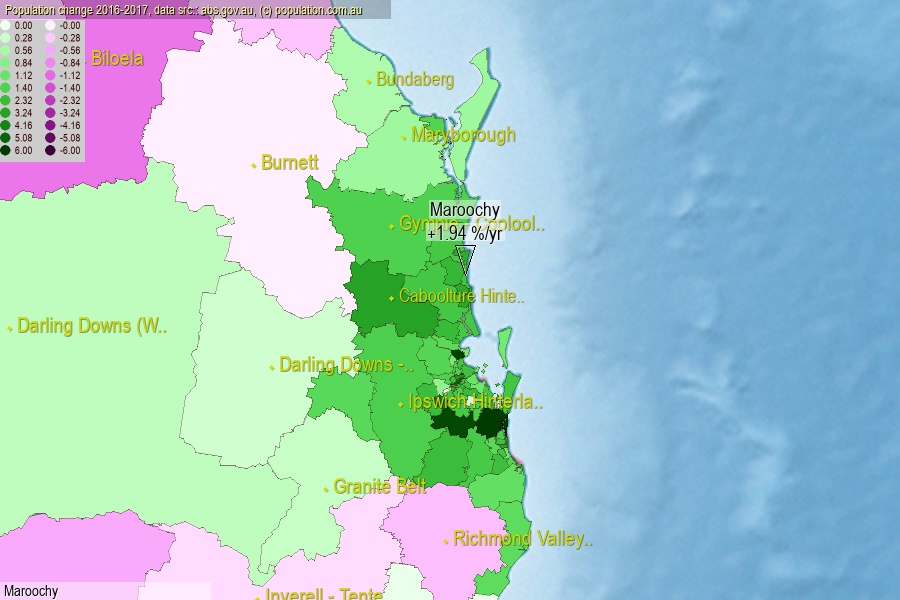 population.com.au
population.com.auLast official estimated population of Maroochy (as Statistical Area Level 3) was 59 597 people (on 2017-06-30)[2]. This was 0.24% of total Australian population and 1.194% of QLD population. Area of Maroochy is 70.00 km², in this year population density was 851.39 p/km² . If population growth rate would be same as in period 2016-2017 (+1.94%/yr), Maroochy population in 2025 would be 69 517. [0]



Click to enlarge. Maroochy is located in the center of the images.
Population [people], population density [p./km²] and population change [%/year] [2]
View borders » (new window) [4]
[1991-1992] +4.65 %/Y
[1992-1993] +5.13 %/Y
[1993-1994] +4.33 %/Y
[1994-1995] +3.34 %/Y
[1995-1996] +2.28 %/Y
[1996-1997] +2.86 %/Y
[1997-1998] +2.43 %/Y
[1998-1999] +2.47 %/Y
[1999-2000] +3.14 %/Y
[2000-2001] +2.39 %/Y
[2001-2002] +2.67 %/Y
[2002-2003] +2.60 %/Y
[2003-2004] +3.48 %/Y
[2004-2005] +2.27 %/Y
[2005-2006] +2.52 %/Y
[2006-2007] +2.06 %/Y
[2007-2008] +2.02 %/Y
[2008-2009] +1.59 %/Y
[2009-2010] +1.25 %/Y
[2010-2011] +1.25 %/Y
[2011-2012] +2.34 %/Y
[2012-2013] +2.10 %/Y
[2013-2014] +1.15 %/Y
[2014-2015] +1.99 %/Y
[2015-2016] +1.60 %/Y
[2016-2017] +1.94 %/Y
[0] Calculated with linear interpolation from officially estimated population
[1] Read more about SA3 and Australian Statistical Geography Standard (ASGS) on abs.gov.au
[2] Population data from Australian Bureau of Statistics (Population and density: 2017; change: 2016-2017)
[3] Digital Boundaries: Australian Statistical Geography Standard (ASGS) 2016.
[4] Border coordinates are simplifyed using Ramer-Douglas-Peucker algorithm.